
This content is protected against AI scraping.
Hey friends! I’ve gotten several questions lately about how to punctuate and set up dialogue, and how to avoid repetitions of “he said, she said.” I’m not surprised, because English is weird, even for English speakers. I’m going to share those questions along with the answers here. Let’s dive in!
When do I write “said Bryn” and when do I write “Bryn said”?
In older novels, the first construction is common, but it has fallen out of favor in contemporary fiction. If you stick to the second way of doing it, your manuscript will probably seem more professional to beta readers and editors, and you’ll save your copy editor a lot of time.
This is not as good.
“Bring me my sword,” said Bryn.
This is the better way!
“Bring me my sword,” Bryn said.
Do I capitalize the “h” in “he said” after a line of dialogue?
Nope. If you have a “he said” or “she said” after a line of dialogue that ends in a period, you turn that final period into a comma and keep the “he” or “she” (or whatever else you’ve got going on there) uncapitalized.
These are wrong.
“Bring me my sword.” He said.
“Bring me my sword.” The captain said.
These are correct!
“Bring me my sword,” he said.
“Bring me my sword,” the captain said.
If you’re using a capitalized name here, it does stay capitalized:
“Bring me my sword,” Captain Jonas said.
If you have an exclamation point or a question mark at the end, you still don’t capitalize the “he” or “she” or whatever unless it’s a name you capitalize anyway.
These are wrong.
“Bring me my sword!” He bellowed.
“Bring me my sword!” The captain bellowed.
“Could you please bring me my sword?” He asked.
These are correct!
“Bring me my sword!” he bellowed.
“Bring me my sword!” the captain bellowed.
“Could you please bring me my sword?” he asked.
This brings me to the next question.
Would you do a list of synonyms for “said”?
There are lists like this out there, but even if there weren’t, I wouldn’t do one. Synonyms like commanded, stated, and explained are fine here and there, but “said” is the right choice most of the time. If you constantly use synonyms for it, you’ll slow down the flow of your story and look like an amateur.
Often, the synonyms tell the reader something they already know. For instance, this is slightly annoying:
“Bring me my sword,” the captain ordered.
Um, we could tell from the sentence that it was an order.
Synonyms for “said” are especially useful when the tone of voice doesn’t match what is being said. For instance:
“Burn in hell,” the pirate suggested.
Burn in hell is an aggressive thing to say, and the synonym for said here is one way to convey that it’s being said in a calm rather than an aggressive tone of voice.
If you rarely use synonyms for “said,” how do you avoid a long line of “he said, she said” down the page?
Easy. First of all, in a long conversation between two people, not every line of dialogue needs to be attributed.
Beyond that, you can use a facial expression to set up a line of dialogue, like this:
The captain glowered. “Bring me my sword.”
You can also use body language or a gesture in the same way.
The pirate folded his arms. “Burn in hell.”
I put together my master list of facial expressions and my master list of body language and gestures to make this easy.
You can also set up dialogue with action, like this:
The captain banged his cup of rum down on the table. “Bring me my sword.”
That’s one of the reasons why I made this list of 50 things your characters can do while they talk.
Okay, moving on!
Do you indent every line of dialogue?
A line of dialogue from a new speaker begins a new paragraph (even if it’s a one-sentence paragraph). New paragraphs are indented, like this:
The captain gulped down the last of his rum and set the cup down on the wooden table with a clank. “Bring me my sword.”
“You’re too drunk to fight,” the pirate said.
If the same character continues speaking, you don’t need to start a new paragraph. For instance:
“Bring me my sword,” the captain said. He gulped down the last of his rum and set the cup down with a clank. “By God, I’m going to challenge that octopus to a duel.”
Is it okay to use italics, all capital letters, boldface, or extra exclamation points or question marks in my dialogue?
Even if your characters are screaming their heads off about life and death matters, the drama should come through in the words themselves, not through the punctuation.
While you don’t want to overdo it, it’s fine to use italics once in a while to show that a character is emphasizing a word. (Some writers will tell you to never do it, but I think they need to calm down.)
All caps should rarely be used, if ever.
Boldface, extra exclamation points, and extra question marks should never be used.
Is it okay to not use quotation marks for dialogue?
It’s your call, and several esteemed writers—James Joyce and Cormac McCarthy, for instance—have written dialogue without quotation marks. However, a lot of readers hate this. I would only do it in literary novels, whose readers have already resigned themselves to more difficult reading.
[AdSense-B]
Do you have any other questions about punctuation and setting up dialogue, or would you like to share some opinions? Let me know in the comments!
And if you like posts about writing, sign up to follow the blog, if you aren’t already – you can subscribe below. Thanks for stopping by!

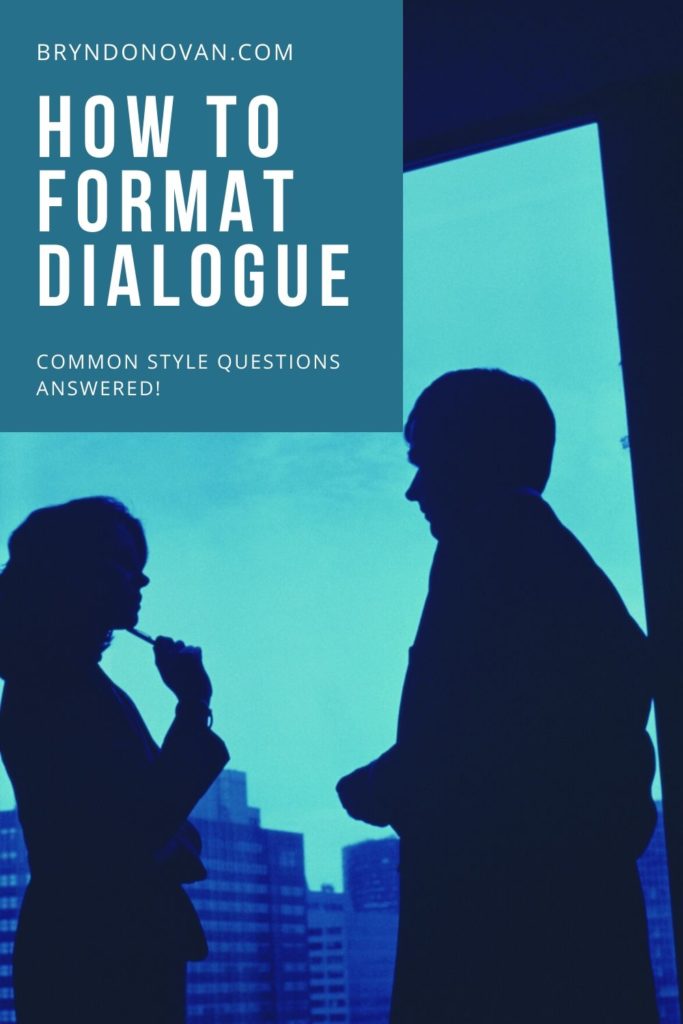
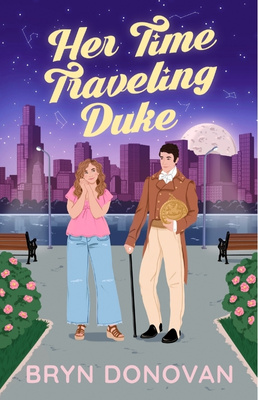
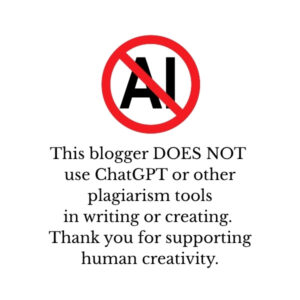


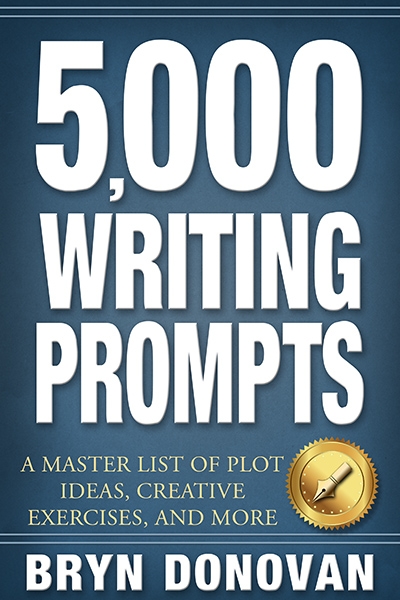
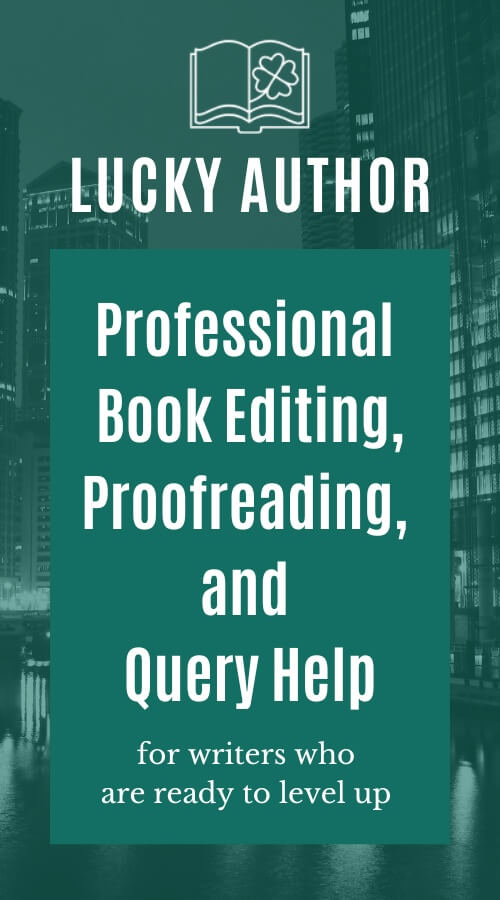

A flobbity-jillion times THANK YOU for point #3. I go ’round and ’round with my editing clients over using synonyms for every single line of dialogue. I don’t mind them occasionally, but absolutely put my foot down and cut them mercilessly if they’re used more than once or so a chapter. It is terribly amateurish and completely unnecessary. “Said” and “asked” are invisible; the reader’s eye just moves right over them. Besides, using anything else is wandering into the realm of telling not showing, another big no-no. So, THANK YOU!!!
“A flobbity-jillion,” hahaha! I think the overload of “said” synonyms are an attempt to mix things up and be creative… I’m pretty sure I did it at some earlier point, since I’ve made most other mistakes (and still make them in early drafts.) Thanks for commenting, Juliet!
I have to agree with Juliet. I so tremendously appreciate your pointing out the importance of using “said” (occasionally “asked”) and, really, no other dialogue attributions. I too have clients whose novels I edit or proofread who err far too heavily on the side of those wild attributions, and the more the better, it seems. I can’t understand it.
Plus, personally, if I pick up a novel to read and find “ejaculated,” “replied,” “responded,” “queried,” “bellowed,” “sighed,” “whispered,” and/or “plotted” (or the like) anywhere in the novel, I put it down (sometimes gently, sometimes not so gently) and find something else to read. Period. End of discussion.
And you’re correct in noting that too often those attributions are *telling* instead of *showing* … kind of like slapping the reader in the face and saying, “Duh!” to make him/her feel stupid.
Example: “Go to hell!” she shouted. (Redundant. The words and exclamation mark indicate the tone.)
Example: “I d-don’t understand,” he stammered. (Redundant. The stammer is obvious.)
And things like “‘I hate you,’ he stated,” or “‘I hate you,'” he replied,” just drive me crazy in general. Use said. Please, just use said. Otherwise, readers will feel lectured, or overwhelmed, or just … done.
Thanks, Eleanore. That one obviously struck a chord! I am actually okay with “shouted,” etc., after an exclamation point, because to me “said” seems like a lie after an exclamation point… so you and I may differ a little there. It still bothers me if it happens again and again, and setting it up in a different way is probably even better! You are probably just tougher than me, which is a good thing in a professional editor. 🙂
And I didn’t even get into using too many adverbs to describe the tone of voice (“calmly,” “suspiciously,” etc.) Again, I think they’re okay in small doses… I suspect you prefer very small doses. 🙂
Hi Bryn,
I do agree that it would be even better to use a beat of action to set up a situation in which dialogue ended with an exclamation mark. You’re absolutely correct; it would be awkward to see the line, “‘I hate you!’ he said” in a work. Just doesn’t quite read as convincing. 🙂
And you’re right again, I do much prefer adverbs in very small doses, or not at all, if I can help it. They just seem like more telling instead of showing to me, and while there’s a place for telling sometimes, it’s usually not where people think.
Thanks!
PS I may need to call you about editing sometime 🙂
It would be a pleasure, any time! 🙂
That’s interesting because I argued about the dialogue in my book with one of the editors. (English is my second language). Basically I would have gone with “You’re too drunk to fight,” the pirate said. But she changed it to “You’re too drunk to fight.” the pirate said. Then the book I am currently reading is using that way as well and I don’t understand why. And I cannot recall where I learned to use a coma instead of a period but it makes more sense to me. I thought a period was always followed by a capital letter.
Hi Prisqua! Oh dear… you needed a better editor. Basically, you were right and they were wrong. 🙂
Thanks for reading, and for commenting!
My editor corrected mine as well. She argued that it is the end of the statement and therefore required a period, but I thought I had learned the comma thing years ago. Is this perhaps a “new” way to write dialogue? My editor is rather young and new to the scene but, I made the presumption that she was correct as it’s been years since I took an English class. She is fresh out if college. Is there somewhere I can reference to show her?
It’s actually been this way forever. Here’s a page from Nicholas Nickelby by Charles Dickens, for instance. Look a little ways down the page: “I hear you,” said Peg, receiving him very graciously.
https://books.google.com/books?id=NdYNAAAAQAAJ&dq=NICHOLAS%20NICKELBY&pg=PA567#v=onepage&q&f=false
Here is a contemporary example, from Donna Tartt’s The Secret History. Take a look at
“Wait,” he said.
and
“Look here, Henry, we’ve got someone to meet you,” he said.
https://books.google.com/books?id=VO2w8m-ZAeMC&lpg=PP1&dq=THE%20SECRET%20HISTORY&pg=PA22#v=onepage&q&f=false
It’s just always done that way. 🙂
This is very useful. Thank you.
Thanks for reading, Laurie!
An inexperienced writer really stands out in the crowd when trying to avoid said. The basic reason for using that one attribution is that readers are so accustomed to seeing it, they hardly notice it so the conversation flows unhindered.
That said, there are many ways to use other words.
“Where have you been?” Harriet scrunched up her face and nearly gagged as the words came out.
“You want to cross swords with a pirate?” Captain Jack folded his arms and laughed at his opponent.
Yep, exactly. Those are great examples, Sean!
Hey Bryn,
thanks for another very helpful post.
I use ‘ ‘ for conversation and quotation marks when characters are actually quoting something, am I doomed now?
Furthermore I only use Italic when you can hear the thoughts of one main character per chapter, because I’m writing in third person. The feelings or thoughts of other characters are sometimes described, but cannot directly be heard.
Hi, Scarlett! Haha, you are not doomed. However, these marks ” ” are standard for conversation, while these ‘ ‘ are standard for a character quoting something within the conversation, so I think you may have them reversed.
And yeah, sometimes you need italics for character’s thoughts… when they are talking to themselves in a way that is kind of like out-loud speech. More often, as you say, that’s not the way people think.
Thanks for commenting, Scarlett! Hope you’re having a great week. 🙂
Excellent post. Thanks for the information.
Thanks, Don!
Loved this post b/c only recently, I argued with a new author over using a period or comma with a he said, or, she said. There was no changing her mind to correct it b/c that’s the way her editor told her to do it.I wonder if this is same editor giving this bad advice to green authors. Pity. The editor needs to take a refresher course in proper punctuation.
I have to admit that I’m really getting alarmed by editors giving out the exact wrong advice!
Thanks for reading and for commenting, Tabitha!
These so called “editors” are real head-shakers. What I’ve seen coming out of the major houses boarders on trash with all the mistakes. Those who have tried to argue about style, and new writers who submit work (some older ones, too) are referred to the Chicago Manual of Style. That is the writer’s Bible. Has been since the early 1900’s. If a person wants to be published, they better know the rules.
It’s true, Sean — standards really seem to have fallen, even in books from the big 5! And YES, thanks for mentioning Chicago Manual of Style!
Wow great advice! I have a question about italics. Is it annoying to have your characters thoughts constantly written in italics? Or should I just use she questioned herself, am I crazy?
Oh Lorrie, this is such a great question, and something I still wrestle with myself.
In third person, I think italics for direct thoughts should be used sparingly and for real emphasis. A lot of the time, it’s not really needed.
Lots of emphasis:
The man vanished into thin air.
Lorrie blinked. Am I going crazy?
Less emphasis:
It was the man from the train station in Vienna.
Lorrie blinked. Was she going crazy?
I hope that helps!
This absolutely helps. It must be all about the emphasis. Thank you, I see it know and have read it before without recognizing it. Because every thought, inner rage, doubt or question does not need to have a pointed emphasis. I have read other books where ever thought was in italics. From the beginning the reader knew every little thought to, “Ack!! There is a spider! Should I kill it?” I am exaggerating but sometimes it comes down to, is it Charmin TP or store brand?
Thanks a million!!
Thank you very much. It’s very helpful 🙂
I have been going crazy thinking about stuff like this whenever I write. Thank you so much! You’re a real life-saver, Bryn!
Ania, thanks for the nice words. So glad it was helpful!
Hi. Just wondering if the Chicago Manual of style is used widely in the UK? I did a writing course from my US based company who quoted from this time and time again. Possibly there’s an Oxford equivalent but I’m not sure. Excellent ideas in your blog!
Hi Fiona! That is a great question, and I don’t know. It’s a good reminder to me that sometimes I’m too USA-centric! A quick Google search suggests that The Oxford Guide to Style may be an equivalent? (Hmm, it used to be called Hart’s Rules, and it looks like the newest version is called New Oxford Style Manual.) Thanks for commenting!
I had to take a moment to say thank you because I fell into the trap of believing “said is dead” and have been writing my fan fiction using every attempt to avoid it. But the examples and alternatives you give have helped me feel I can breath new life into my writing. Thankfully, thus far, my reader have enjoyed what I’ve churned out and not made comments regarding my use of flowery language but it makes me excited to think I can improve myself more by using a more simple way to show dialogue. I’ll add here I saved your lists of things characters can be doing while talking to help me paint a picture more. I was starting to get bogged down in my own attempts to be clever and appreciate the reminder that sometimes simplicity is really the best policy. I have a feeling I’ll be visiting your blog many more times to improve my writing. Thank you for what you share here.
Hi, Michelle! Thinking one needs to find a lot of synonyms for “said” is very common, so you’re not alone. And it took me forever to understand how useful facial expressions, body language, and action were in setting up dialogue. I’m so glad you liked this! Thanks for commenting, and I hope you have a great year of writing!
PS and I’m not surprised that people have enjoyed your work, even though you’re seeing ways to improve! Writing doesn’t have to be perfect for people to love it… I mean, really, almost no writing is perfect! 🙂
Thank you! I’m actually working on the next chapter of one of my stories and working to employ the techniques you talk about here. I’m still struggling with it a bit since I’m so used to writing the other way and agree that using adverbs here and there to describe a character’s tone of speaking can be acceptable, I’m just working to use them less so it flows better. It’s slowing me down slightly but still I’m glad to learn something new to spice up my writing and know I will only get better the more I do it.
I went through that exact thing! It felt weird at first and then after a while it became natural. 🙂
But I love writing dialogue with synonyms for said! I was scared and went back to review some recent writings. Four in 40-50 lines of dialogue. Maybe, I’m not too bad. I can get that down to two. Great tips for the Grammarly impaired such as myself.
Hi, Tam! It can be daunting or unpleasant at first to switch gears in writing… but maybe give it a try and see what you think. 🙂 And take a look at what your favorite authors do!
One thing you didn’t mention is how to handle dialogue between three or more people. Fun times.
True, that is really tricky! You have to tag so many more lines of dialogue. One’s best bet is to never allow more than two people to discuss anything in a story. (Just kidding!) Thanks for commenting, Sean. 🙂